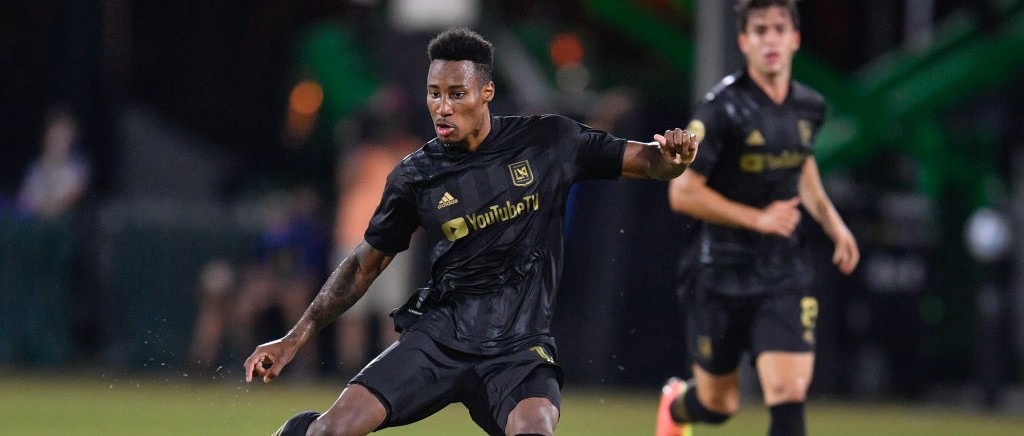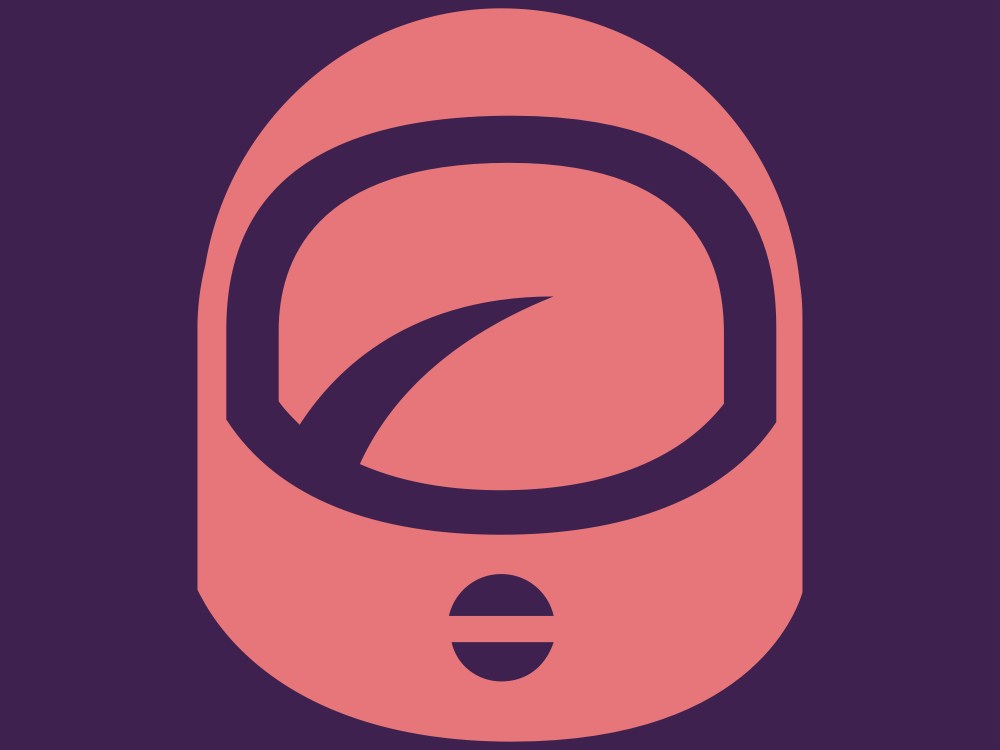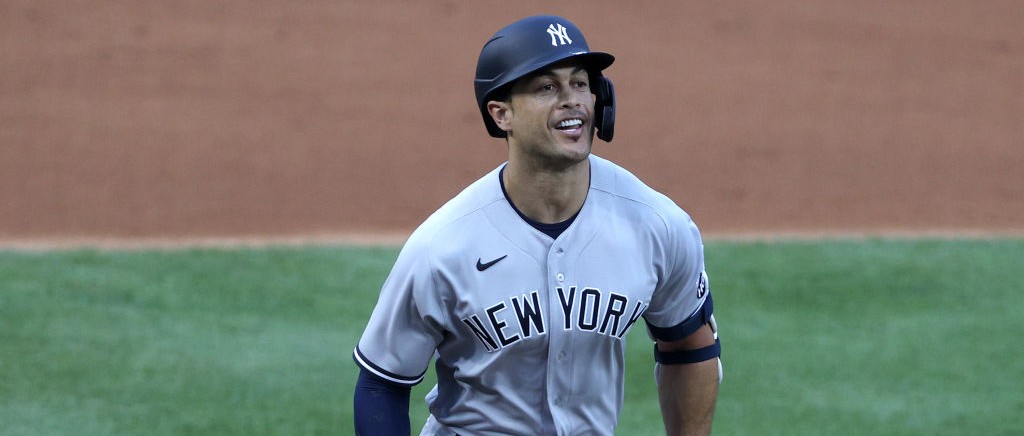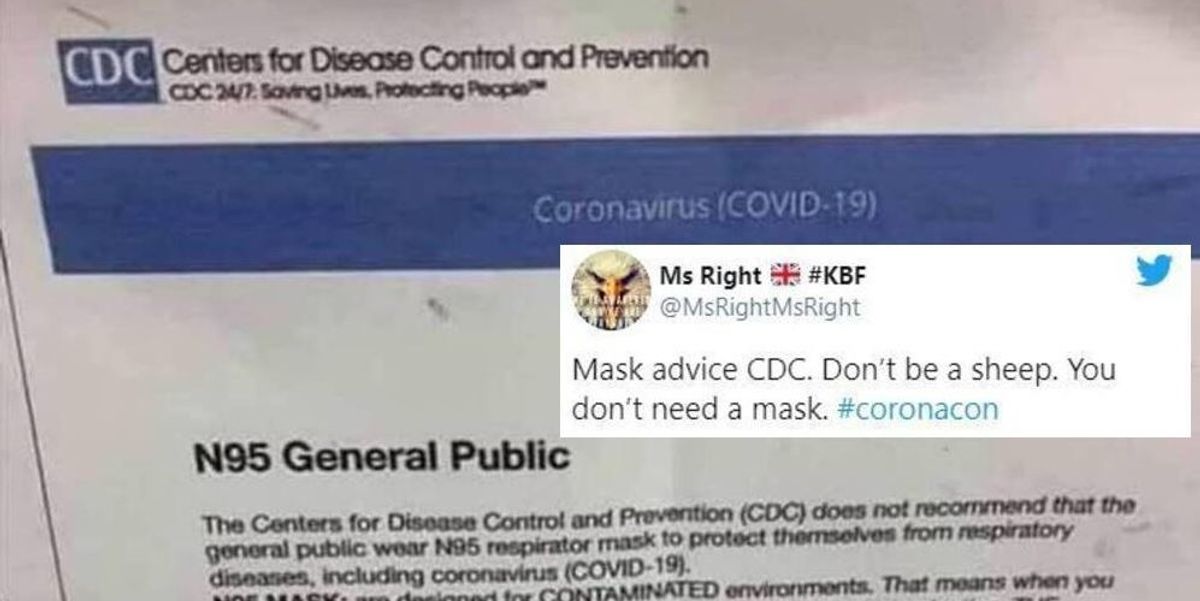
It is extremely easy for rivalries to feel forced. That’s particularly true in Major League Soccer, which is frequently adding teams and rivalries become borne out of proximity instead of the kind of deep-seeded resentment that can only come when bad blood is given a chance to fester over years and years.
But every now and then, MLS manages to catch lightning in a bottle, turning a new, regional showdown into a rivalry that feels authentic. No better example of this is El Tráfico, which pits arguably the league’s most visible side, Los Angeles Galaxy, against relative newcomers LAFC. While the Galaxy had the leg up early on in the rivalry, picking up a pair of wins and seeing out three draws in the first five games, LAFC have been dominant lately, winning a postseason thriller last year and running their rivals off the pitch in their most recent matchup, a 6-2 drubbing on Saturday evening in Orlando.
Mark-Anthony Kaye has been part of this rivalry from day one. Kaye, a Toronto native who joined LAFC ahead of their inaugural campaign in 2018 from USL side Louisville City, has been a staple of the team’s midfield since day one, and has played in five of the seven tilts against the Galaxy, which included captaining the side over the weekend. He, like the rest of his team, is posted up in the Disney bubble that is hosting the MLS Is Back tournament, where LAFC is the favorite to win the entire thing — and, as you can guess, there’s a “positive feeling” among the squad following their most recent win.
Uproxx Sports caught up with Kaye ahead of their final group stage game — which took place on Thursday night against the Portland Timbers — to talk the bubble, the rivalry, and what it was like to play such a hotly-contested game under such unique circumstances.
How were things going on now that you’ve been down to the bubble for a month or so?
Yeah, it’s been great. I think it’s been a process for everyone. There’s a lot of anticipation leading up to what it would feel like once we got here. And I think the staff, they’ve done a good job to keep the players in a good mental space. I think that’s the most important thing, especially whenever you’re in a hotel for so long, away from your family, we feel cooped up.
But yeah, once the game started, it starts to get a little bit easier to deal with, I think. We’re here to play soccer and whenever you have an opportunity to do that, it’s like euphoria, you forget about everything else that you have to deal with in that moment. So yeah, the guys have been doing really well dealing with the situation and we’re just trying to do our job here and then the quicker we do that, the quicker we’re out.
How long did it take to get used to being down there? Is that something where, you mentioned the process, is it still a process for all of you because you just can’t get used to a situation this unique?
I think so. I don’t think many people here have really adapted yet. Whether it’s the time change, or the training times, or the temperature, or the weather. I think that everyone is trying to find the best way to manage it. I know that I haven’t. I think it’s a process for me. Some days I wake up and it’s good and some days I wake up and I’m exhausted, mentally drained and I haven’t done anything.
So yeah, it’s definitely a battle of the strong-willed right now. And like I said, I think the best thing about it is the fact that you’re around your team and you can play the sport you love. I think once we get out to training, everyone’s in a good mood and then you get a game, everyone’s excited. But for the rest of the, say, I don’t know, eight to 12 to 16 hours of the day, there’s a lot of ups and downs.
Can you just quickly bring me through a day in the life of Mark-Anthony Kaye while he’s hanging out down at Disney and in the bubble?
So we’re pretty fortunate with having a late breakfast time. So I’ll probably wake up, go downstairs, get some breakfast. I try to keep growing the relationship I have with my girlfriend, even though we’re far away from each other right now. So we’ll actually do Peloton, yoga sessions together on FaceTime just to keep that engagement high and just have some sort of social interaction outside the bubble.
And then there’s a lot of downtime, so either there’s Premier League games on, or there’s MLS games on, and then I’ve been pretty big into some self help books and just reading, trying to calm my mind down. So usually consists of yoga, watching some Premier League games, and then reading a little bit. And then by that time, the day has rolled on and you’re getting ready for training, and then that’s when all the excitement comes in.
Reading anything particularly good, or anything that’s been really helpful for you, while you’re down there?
What I’m reading right now is How to Win Friends and Influence People. A lot of people have recommended the book to me and I had started it maybe two months ago, but now being in a situation where I’m called on to be one of the leaders in the group, I think it’s important to find ways to communicate with your teammates in a stressful time like this, so this book has helped me to understand how to see people’s views and go about trying to get them to see the greater picture that we’re trying to achieve right here. So it’s been good and it gives me a sense of calmness before you go in, you engage with new players. And it’s always good to learn stuff, I’m always open to that.
Is there anything about being down there that’s really surprised you?
No, not really. I think we all had this idea in our head that it was going to be a miserable, miserable time. And I’m not saying it’s the best time, but it’s definitely not what our imagination was perceiving it to be. The resort is nice. There is a lot of things you could do with your free time, if you want to be out in the muggy heat all day. But it is what it is, I don’t think a lot of us are used to being in hotels for this long. The food is hotel food, and you can get fed up with it eventually. But other than that, it’s a nice resort, it’s just the situation where you can’t go anywhere. I think that’s the part that weighs on people a lot.
I am going to guess though, you can correct me if I’m wrong, the fact that they’ve been doing testing and it seems like after that initial rough patch with a few teams, they haven’t found any positive cases, that’s something that’s brought you guys a bit of calmness.
Yeah, no, 100 percent. Coming in, I really appreciated that we came in late. We came in later, so I think they shored up on all their protocols and made them much more efficient after Dallas and Nashville. So there was a sense of calmness now that it’s like, “Okay, there’s no cases in the hotel. You can breathe a little bit now.” Because safety is a big thing, right? And I think the safety is the big stressor in this situation, and the fact that we’ve done a good enough job to make the bubble pretty safe right now, I think players are now enjoying their time a little bit more because they don’t have to worry about that health concern. So, yes, you’re right.
So let’s talk about the Galaxy a bit. In sports, rivalries can feel pretty forced and inauthentic, but in the two years or so this has gone on, this truly feels like a rivalry in every sense of the word. As someone who’s been in it since day one, why do you think that’s the case?
Well, there’s two things. One of them is the fact that LA Galaxy is such a historic club within MLS. Winning five championships, I think they kind of set the tone for what MLS wanted to be and bringing over some high-profile players like David Beckham. So I think there’s a lot of pride around MLS on how LA Galaxy has been perceived in the world, right? And then you also have the aspect of L.A., a city of big culture whether it’s the film industry, music industry, sporting industry, it just always garnishes a lot of attention. So the fact that a young club like ours comes into a city where it’s like make or break, you got to do something you’re in the limelight right away.
And the fact that there’s the club that has been doing really well, but is not necessarily injected into the city as much as they would like to, I think right away there’s that little hatred that comes in, because the Galaxy has been doing so well for so long, now LAFC is here it’s like, all right, there’s a real rivalry. And I don’t think it has to be forced or anything.
The perfect example is Manchester United and Man City in England. Manchester United is a historic club, winning the Premier League left, right, and center. And you look at Man City now, the new guys on the block, and they come in and they’ve taken over, right? People still respect Manchester United, but when it comes to comparing the two teams, they’re on different levels. And I think that’s where it’s at in between us and LA Galaxy. Because yes, LA Galaxy has done a lot for the league. We all appreciate that, especially young kids growing up and seeing what they’ve done. But now it’s a new wave of football and LAFC is there and no one wants to be forgotten. So I think that’s what helps create this intense rivalry.
That actually leads up pretty nicely into the next question, which is that there is just so much hype around this, and then you get in there and those first five matches don’t go your way. What does that do when you’re in the locker room when, in the way you’re describing it, everyone is on the same page where you want to do whatever it takes to make L.A. your town?
Obviously winning rivalry games are important. And out of the season, maybe it’s six or nine points on the table for you. At the same time we’re a club who’s trying to continue to create a real football identity, that plays enjoyable football that people like to watch. And we can’t always get caught up in the idea of trying to beat the Galaxy, because if we focused on what we can control and continue to grow as a club and a team, we will have games where we will beat them.
So at the beginning yeah, it was a little frustrating. But we also understood how much the Galaxy needed certain wins against us to keep them afloat, you know what I mean? To keep them relevant. And I’m not saying that we were okay with losing, but we understood that there was something bigger at play and that we wanted to be a championship team.
So yeah, the first games didn’t go our way. But you look at even last year, the way we dominated the league, that’s something we’re proud of. Yes, we want to beat the Galaxy, but we’re more proud of how we’re perceived amongst the entire league and perceived amongst the world, you know? So yeah, it was a difficult time, but now I think times are changing.
The thing that helps is that from day one, it seems like the fans on both sides of this have brought that little extra something every time you’ve played. What does that do for your squad, whether you’re in your building or you’re feeding off of the more negative energy that the fans have in their building?
Obviously it’s huge for our supporters to be able to passionately support a club they believe in against a club that they don’t believe in. So I think the fan part of it, the supporters part, of it is huge. It adds a massive factor to the rivalry. And when we’re in our stadium, no matter who we’re playing, it’s amazing. And when we play the Galaxy, they raise it to another level which is unbelievable. I give them credit all the time for what they’re able to achieve and really bring to our stadium because that’s what really puts us on the map in the world. You look at the most successful football teams, they’re the ones with the passionate fans and the environments that are crazy. So we’ve done a good job to assert ourselves into that category early on in our history.
But even going to Galaxy and playing against them, it’s almost you play to disappoint the opposition supporters, you know what I mean? You want to go into someone’s home and take three points from them because that feels so good because you have so many people who are rooting against you, and everyone loves to be the underdog in a situation and come up on top.
So yeah, the supporters are massive in this rivalry and I think it’s going to continue to grow more and more. And I hope that it grows in a safe way because I feel like the hate is real amongst them but it’s important for the growth of football.
Obviously that leads into Saturday night. What’s it like playing what is the match in MLS right now — one that is defined by, in large part, the supporters on both sides — but doing it in that environment where it’s just you and the other guys.
Yeah. It’s definitely a challenge, you know what I mean? Obviously we want to win every game, and I think that’s something that we really hold firm too. I think we never look into a game different than another one. Maybe tactics change a little bit, but we want to win every game. There’s no way that the group of players that I’m with here are going to be like, “You know what, this game we’re going to actually give 120 percent.” Every game we want to win.
And I think that’s what divides us from the Galaxy in that sense, because you can see that their energy changes when they play us. But then it’s like, I always say, “If you guys have the energy for…” because they don’t have a bad team, but if they have that energy all the time, they would get more results.
So I think we’ve established how we want to play, how we want to be as a club. And whenever we have opportunities to play the Galaxy, we’re excited because we get to test our football up against a team that is just trying to stop us from doing anything. They’ll do whatever it takes. So in a game on Saturday where there’s no supporters, it’s a challenge to mentally get yourself prepared for this battle.
And if you look into the first 30 minutes first half, we didn’t do very well. And you could see the Galaxy were a step quicker than us and winning loose balls and stuff like that. But at halftime, you go in 2-2, it’s discouraging to them to work that hard and to only be tied to half. And we know we trust in our football ability, so we know that as the game goes on they’re not going to have belief in their system.
So like you said, it’s a big game nonetheless and we’re always excited to be on that platform. I think the guys are starting to become more experienced with it and calm in those situations and not feel the pressure to always have to play out of their minds. So no, it’s good. And like I said, we’re always excited to play the Galaxy.
Was it helpful getting a sense of what that environment was like with the game against Houston before? Or was it you knew that when you were stepping on to the pitch with the Galaxy and you hear there’s just nothing around it, that’s not something that you could really prepare for.
Yeah, I think from playing without fans, it’s tough when you’ve been doing that for so long. So I think, yeah, the Houston game definitely helps. Playing a game in that environment and seeing how you have to rely on your teammates to motivate you through certain situations in game. So yeah, I think it was important that we had a game under our belts already. Either way it is a little bit harder without fans. It shows how much appreciation they should get towards the game and for growing the game. But yeah, I think that Houston game definitely helped get us on the right page to understand what we needed to bring in this tournament.
With the game, fell behind early, drew level, fell behind again and then you guys pour it on, [LAFC forward] Diego [Rossi] has the game of his life, all this stuff. What were you guys doing that led to things eventually getting so one-sided?
I think it’s just sticking to our ideas, you know what I mean? Sometimes things aren’t going to go your way in a game, but it’s 90 minutes and you can score a goal in 30 seconds or less. I think it was just understanding that, yeah, you know what, we didn’t win the first half, but we need to win the second half. And I think going into a game with that mentality, knowing that you’re not going to let anything slip in the second half, it puts everyone on this edge, this killer edge. And getting that first goal early on in the second half, I think really took the wind out of them and gave us a real push.
So like I said, we’re a team that will always believe in ideas and we don’t change much. Even if things aren’t working, we’re still going to stick to what we’re doing and figure out a way. That’s how we have to learn as a group. So in the second half, it was a great performance, especially from the subs who had come into the game. They really took it up another level. And that’s the show of a great team, a bunch of players that whether you’re starting or you’re coming off the bench, you’re going to do your best and help your team win.
And I’m going to guess that both in the past two games that you’ve played and then going forward, that inherent trust that you have in one another, in [manager] Bob [Bradley] and all this is something that you think gives you guys a trump card in a way, is that fair to say?
Yeah, because we know who we are, and I think it’s a struggle for, I don’t want to talk about other clubs, but for us, we know who we are. We know what kind of football we want to play. We have ideas we work on all the time. So that trust is there. We trust in our system and in our identity. So yeah, when we go into games, sometimes things don’t work, but we got to figure out a way with the ways we’ve been training to find a solution. And I think that’s why some teams have success more than others because they stick to what they’re working on. Because I think if you change up too often, you know what I mean?
Yeah.
It becomes confusing and then people don’t believe in it and stuff like that. So we’ve done a really good job to stay true to who we are.
So I’m pretty sure I can guess the answer to these next two — goals for the rest of this tournament?
Goals for the rest of the tournament is to win the whole tournament. That is always a goal of LAFC, is to win and to have hardware to bring home. So that is definitely a goal.
And then wild guess, the next time you guys play the Galaxy you want it to be in your building with your people behind you, is that right?
Yeah, that’d be great. I think games at our stadium are just more electric. It’s just a better venue and I’m sure the Galaxy players love playing at our stadium and we love playing there too. So yeah, it would make for a great game.








